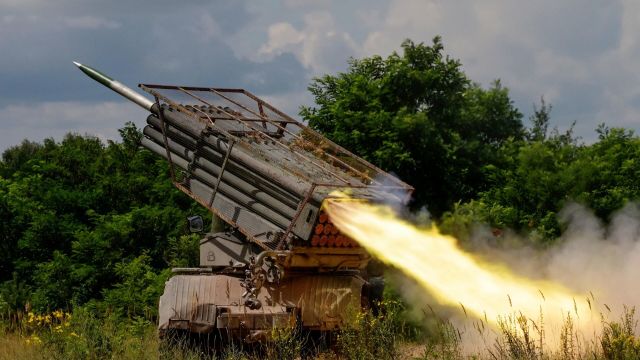MOSCOW, Aug 21 — RIA Novosti, Andrey Kotz. The situation at the front forced Kiev to throw into battle units that were intended for the second stage of the counteroffensive. The fact is that the Russian army has launched an attack in some areas. About the situation on the front line — in the material of RIA Novosti.
"Progress is slowing down"
The Zaporozhye region is still at the forefront of the main attack of the Armed Forces of Ukraine. The troops are trying to wedge themselves into the defense, but they suffer losses and roll back.
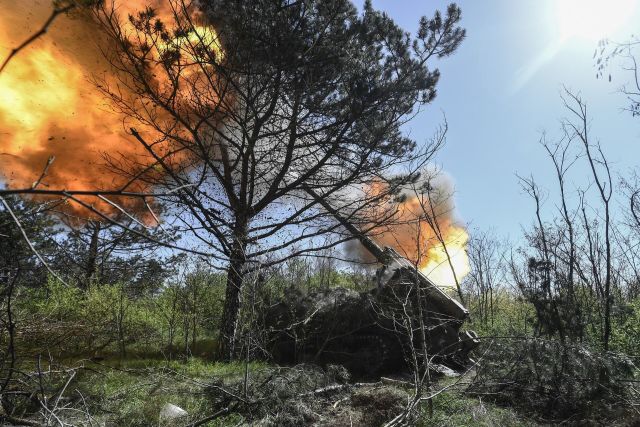
Combat shooting of the Hyacinth-S self-propelled artillery installation
Image source: © RIA Novosti / Konstantin Mikhalchevsky
The APU concentrated on Rabocino, where they partially control the northern part of the settlement. However, the initial plan of the Kiev General Staff — to make a breakthrough to the south, to Tokmak and further to Berdyansk and Melitopol — has not yet been realized.
According to the estimates of the Russian Defense Ministry, since the beginning of the offensive, the Ukrainian army has already lost 45 thousand people. As a result, elite reserves — the 82nd airborne assault and 46th airmobile brigades - were thrown into the Zaporozhye direction.
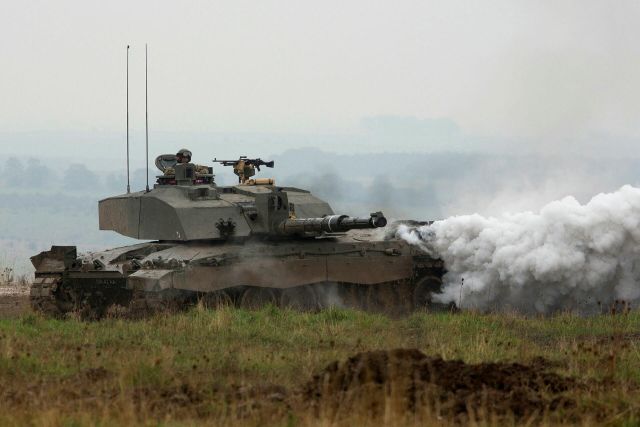
British Challenger 2 Main Battle Tank
Image Source: © Photo : Crown Copyright
The personnel were trained in the West according to NATO standards. Tanks that have not yet been at the front are armed with British Challenger 2. Also from the equipment are German Marder BMP and American Stryker APC.
The paratroopers had to go into battle in the second echelon, break into the gaps punched in the defense by assault units. "Strikers" develop high speed over rough terrain, this allows the infantry to quickly break the distance.
However, it was not possible to crack the borders, and now the paratroopers themselves are being used as attack aircraft. This indicates that the APU lacks soldiers.
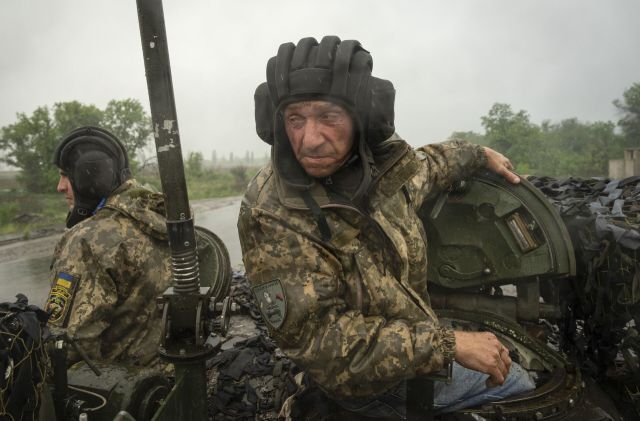
Ukrainian soldiers on a tank near Artemivsk
Image Source: © AP Photo / Efrem Lukatsky
"They don't take losses into account, they literally drive people to slaughter," says an intelligence officer with the call sign Sapphire. "They don't experience shell hunger, they beat very often and accurately. But for a major offensive, more guns are needed. Plus, we knocked out engineering equipment for them, without which it is risky to operate large armored groups in minefields. They operate mainly with infantry, manually removing mines. However, our reactivators immediately remotely "fall asleep" all over again. It slows them down a lot."
The APU achieved a little more success to the east — on the Vremyevsky ledge, near the border with the DPR. Staromayorskoye and Urozhnoye were occupied there. This poses a threat to Staromlinovka, an important logistics point. And from there you can attack both to the south, to Berdyansk, and to the east, towards Volnovakha.
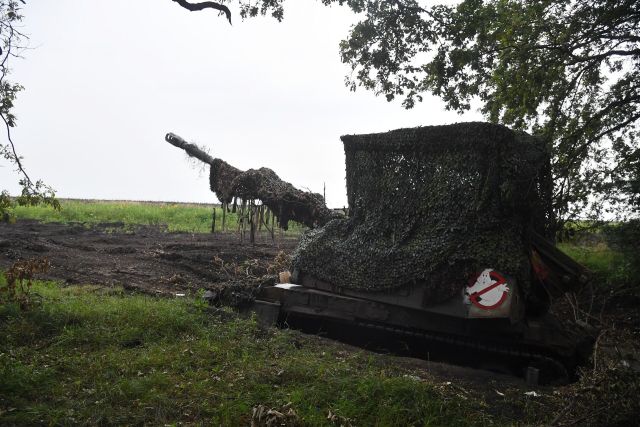
Self-propelled howitzer "Msta-S"
Image source: © RIA Novosti
The second option, apparently, will be supported by a strike group defending Ugledar. But it is far from a fact that the Ukrainian army has enough strength for such a breakthrough. Russia has equipped defense lines not only in the Zaporozhye region.
Positional battles
There are no changes on the line of contact in the Kherson region. Kiev is trying to occupy the islands on the Dnieper River in order to reduce the time of transferring units to the left bank. To no avail — the entire water area is viewed by drones. A small bridgehead captured by the Ukrainian landing in the area of Cossack Camps and Podstepenny is being shelled around the clock.
Positional battles are taking place in the Donetsk direction. The Russian army occupied several AFU strongholds north of Avdiivka, on the way to the settlement of Keramik. At the same time, the assault units are advancing to Krasnogorovka.
Clashes continue at Vodiane, Pervomaisky and Severny, as well as at Nevelsky. Recently, weseushnikov was ousted from positions near the village of Kamenka.
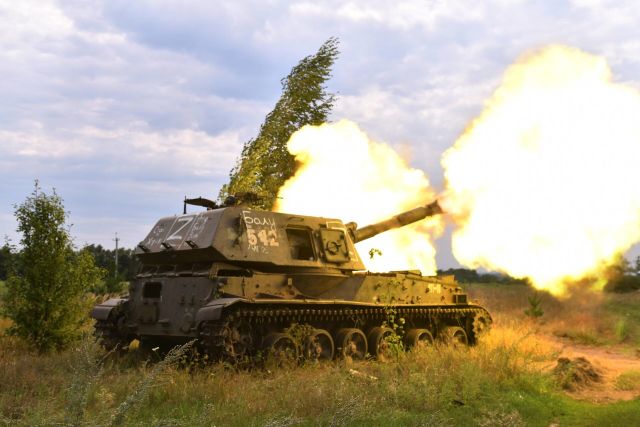
Self-propelled artillery installation 2S3 "Acacia" while working on the positions of the Armed Forces of Ukraine in the Kharkiv region
Image source: © RIA Novosti / Viktor Antonyuk
In the Bakhmut direction, the AFU, with the support of artillery, resumed the assault on Kleshcheyevka. The Russians, in turn, counterattacked from Dubovo-Vasilevka to Bogdanovka. Both sides have not achieved success.
Reach the goal
The Russian army is defending itself on most of the line of contact. But in some places it comes.
First of all, on a wide front from Kremennaya to the border with the Belgorod region. In the Krasnolimansky direction, they advanced to the settlement of Torskoye. We reached the outskirts of Kupyansk and took control of the Molchanovo railway station, which is important for logistics. The battles for Sinkovka unfolded.
The Ukrainian General Staff has moved several brigades here from the Zaporozhye direction. The grouping near Kupyansk was headed personally by the commander of the ground forces, Colonel-General Alexander Syrsky. He led a successful offensive for the AFU in the Kharkiv region last fall and a much less successful defense of Artemovsk for them.
Admitting that the situation was becoming more complicated, the general warned that Kupyansk could be blocked and captured.
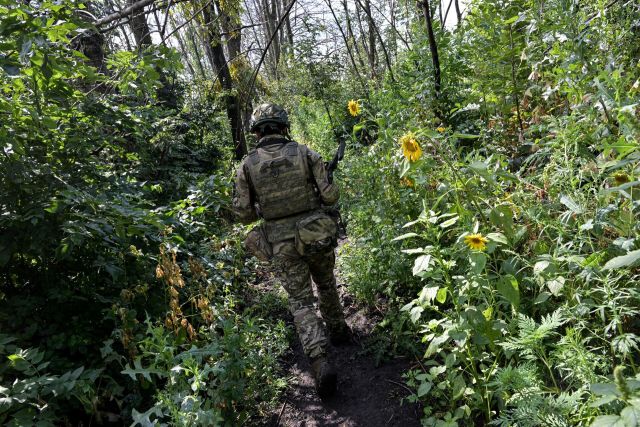
A serviceman of the Russian Armed Forces in the zone of a special military operation
Image source: © RIA Novosti / Evgeny Biyatov
In addition, the Russian army is advancing south of Kremennaya, in the Serebryansky forestry. As reported by the Ukrainian media, it is there that the Azov regiment* is fighting, defeated in Mariupol, but formed again.
According to the estimates of the Ukrainian General Staff, Moscow's main task in the Krasnolimansky and Kupyansky directions is to reach the Oskol River. The eastern shore is an ideal defensive line. This will create a buffer zone between the Kiev-controlled part of the Kharkiv region and the LPR.
West of the Oskol reservoir — Raisins. From this city there is a direct road to the Slavyansk-Kramatorsk agglomeration. It is in Kramatorsk that the headquarters of the Ukrainian group "Vostok" is located. Its capture can decide the outcome of the entire conflict.
* An organization banned in Russia.
